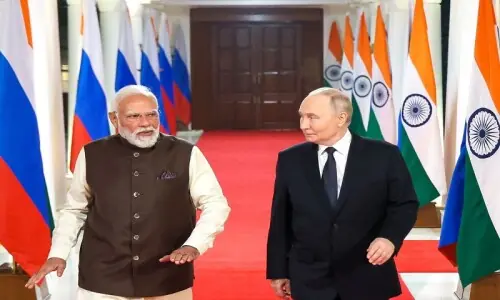In contemporary times, religion and religious identity is being used as cover for political agenda. Be it terrorist violence or sectarian nationalism in various parts of the world, religion is used to mask underlying politics.
Where once there was talk of separation of religion and politics many decades earlier, our current age is swinging in the opposite direction, more so in South Asia.
This is unfortunate, because keeping the problematic relation between state, politics and religion aside, there are some traditions within the major religions that have broad universal appeal that could help us progress as a whole.
The Sufi and Bhakti tradition in Pakistan and India are two such trends from within Islam and Hinduism respectively, that are focused more on the unity of humanity as a whole, overcoming sectarian divides.
Also read: Sufism — a balm on India's religious wounds
The saints from these traditions had massive appeal among people of different religions and they were away from the centers of power, unlike the clergy.
We have seen rich traditions of people like Kabir, Tukaram, Narsi Mehta, Shankar Dev, Lal Dedh, clearly from within the Hindu tradition, while Nizamuddin Auliya, Moinuddin Chishti, Tajuddin Baba Auliya Ajan Pir, Nooruddin Noorani (also known as Nund Rishi) coming from a clear Sufi tradition and Satya Pir, Ramdev Baba Pir, having a mixed lineage, where Bhakti and Sufi themselves are deeply intertwined.
Sant Guru Nanak did try a conscious mixing of the two major religions of India. He traveled up to Makkah to learn the wisdom of Islam and went to Kashi to unravel the spiritual moral aspects of Hinduism. His first follower was Mardan; and Miyan Mir was the one who was respectfully invited to lay the foundations of the Golden Temple of the holy Sikh Shrine.
Guru Granth Sahib has an inclusive approach to religious wisdom. No wonder people referred to him as, ‘Baba Nanak Sant Fakir, Hindu ka Guru Musalman ka Pir’ (Saint Nanak is a saint for Hindus and a pir for Muslims).
Today, while global discussion on religion has been centered on its divisive effects, a renewed interest in Sufi tradition is heartening.
Also read: Can Sufism save Sindh?
Sufism has been prominent in South Asia for the last 10 centuries. The word Sufi means a coarse wool fabric, the type worn by Sufi mystics. It has strong elements of mysticism, giving no importance to rituals, aimed at an understanding of the divine by transcending anthropomorphic understandings. This is similar to the belief held by Bhakti saints also.
In the beginning, the orthodox sects started persecuting them but later compromises were struck. The Sufis formed the orders of roving monks, dervishes. People of all religions, in many countries, frequent their shrines, and this again is similar to the Bhakti saints, who have a vast following among people of different religions.
In parallel, Bhakti is probably the most outstanding example of the subaltern trend in India's religious history.
The Bhakti saints came from different streams of society, particularly low caste. Bhakti opposed the institutionalisation of religion, tried to decentralise it, and declared that religion is a private matter.
It gave respectability to the separation of state power and religion and merged the concept of God worship with the process of gaining knowledge; travails of poor people are the focus of the Bhakti saints’ work.
The Bhakti traditions gave respectability to many low castes, posing a challenge to the upper caste hegemony; this tradition had an inclusive approach towards Muslims as well.
The Bhakti tradition opposed the rituals, hegemony of the elite of society. They adopted the languages more popular with the masses. Also, they talked of one God. In India, in particular, Hindu-Muslim unity has been a principal concern expressed by many of the saints from this tradition.
Also read: Old Sufis, new challenges
In the subcontinent, during the freedom movement, the declining sections of society, Rajas, Nawabs, Land lords threw out Muslim and Hindu Communalism to begin with.
This nationalism in the name of religion had nothing to do with morality of religions, it was merely a use of religions' identity for political goals. In the national movements, we had people like Gandhi, Maulana Abul Kalam Azad, who were religious but opposed religious nationalism.
The essence of the Sufi and Bhakti tradition are reminders to us that the spiritual-moral part of religion has been undermined in current times.
The inclusive, humane nature of these traditions needs to be upheld and the divisive-exclusionary versions of religions have to be ignored for humanity to progress.



































